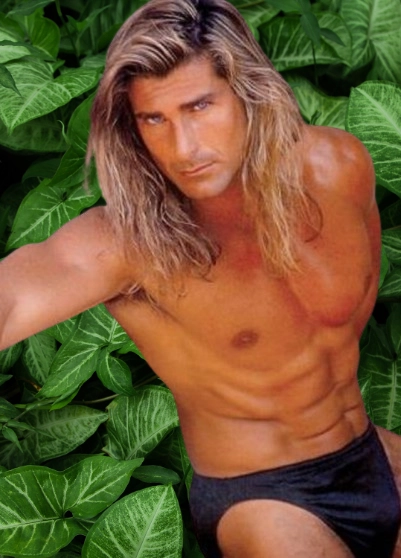Long before filtered Instagram feeds and digital influencers, there was one man who became a living fantasy without hashtags or algorithms. His name was Fabio — no last name needed. With flowing golden hair, a chiseled physique, and a stare that could rival a Harlequin sunset, Fabio wasn’t just another face in the fashion world — he was its myth.
Born in Milan, Italy, Fabio Lanzoni first entered the scene as a model, strutting down catwalks for top designers. But his fate was far greater than runway shows and seasonal trends. He found immortality in the unlikeliest of places — on the covers of romance novels. In the late 80s and throughout the 90s, the publishing world exploded with passion-filled paperbacks, and Fabio was the face of it all. He graced hundreds of covers, shirt unbuttoned, arms wrapped around wide-eyed heroines, standing stoic beneath painted skies. For millions of readers, his image came to define the very idea of romance.

And yet, Fabio was more than just a beautiful man on glossy covers. He was the first male model to become a household name through mass-market exposure. In many ways, he redefined what it meant to be a supermodel — a term previously reserved for the likes of Cindy, Naomi, and Claudia. Fabio didn’t just walk in their world. He built his own. While his female counterparts captivated fashion magazines, Fabio conquered supermarket shelves and corner bookstores, transforming every checkout aisle into a shrine to idealized masculinity.
What made Fabio stand out wasn’t just his looks, but his ability to embrace the fantasy. He leaned into the theatrical. The long hair, the wind-blown drama, the poetic intensity — it was all part of his performance. But beneath the melodrama was a man who understood exactly what he was doing. Fabio had a sense of self-awareness that made him untouchable. He knew the image was over the top. That was the point. His confidence in owning that character — the romantic warrior, the soft-hearted brute — made him not just popular, but iconic.
As fame followed, so did television. Fabio became a fixture in American pop culture, appearing in talk shows, sitcoms, and especially commercials. His most memorable campaign — the infamous “I Can’t Believe It’s Not Butter” ads — cemented his image in the American psyche. The juxtaposition of a romance god selling margarine was absurd in the best way, and Fabio’s over-the-top delivery made the spots unforgettable. He was no longer just the fantasy of romance readers. He was a celebrity, celebrated and parodied in equal measure.
Despite the camp and chaos, Fabio remained grounded. He stayed away from the typical celebrity scandals, focused on clean living, fitness, and business. He launched his own line of protein products, invested in health ventures, and authored a few romance novels of his own — embracing the genre that made him famous. But unlike many stars of that era, Fabio never ran from his image. He didn’t try to reinvent himself as something else. He was Fabio — always.
What’s fascinating is that Fabio’s legacy spans beyond the moment. In today’s digital age, where everyone curates their persona, his story feels oddly modern. Long before influencer culture, Fabio built a personal brand rooted in fantasy, aspiration, and spectacle. He became a fashion icon by stepping outside the box — never the tailored suit type, but always styled like a medieval prince with a tan and perfect teeth. He made romance marketable in a way no male figure had before, and he did it with zero irony.
In retrospect, it’s easy to look at Fabio’s career and laugh — the wind machines, the oil, the staged passion. But that laughter is always affectionate. He offered escape, magic, and a wink to the audience that knew it was all a bit much. And that was the genius of it. He gave people what they didn’t know they needed: a man who could be strong and soft, exaggerated and earnest, mythic and mundane — all at once.
As the world of modeling evolved and celebrity began to take new shapes, Fabio remained frozen in time — not in a sad way, but as a monument to an era when fantasy was fun and fashion didn’t need to be minimalist. Ask anyone who lived through the 90s and they’ll remember him instantly. The hair. The accent. The unapologetic romance of it all. Fabio didn’t just pose for covers — he posed as a cultural touchstone.
In a world now obsessed with authenticity, Fabio reminds us of the beauty of performance. He reminds us that it’s okay to be theatrical, to live in full color, to wear silk in the sun just because you can. He was never embarrassed by what he represented, and because of that, we never were either. His presence was a celebration of beauty, drama, and the power of a good story.
Fabio was, and still is, a legend. Not because he changed the fashion industry or revolutionized literature — but because he dared to be unforgettable. And in doing so, he became the fantasy we didn’t know we needed — and maybe still do.




